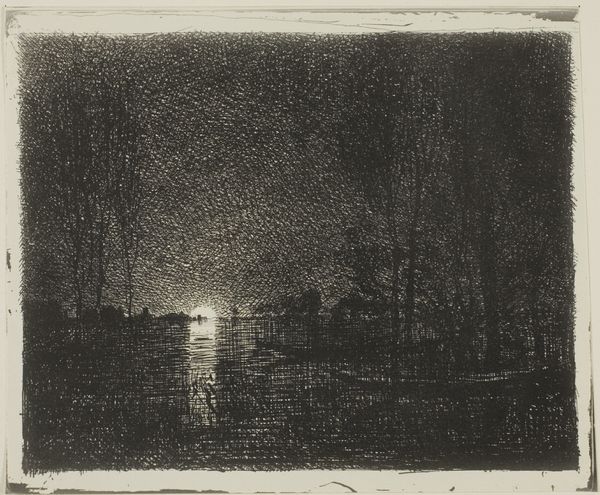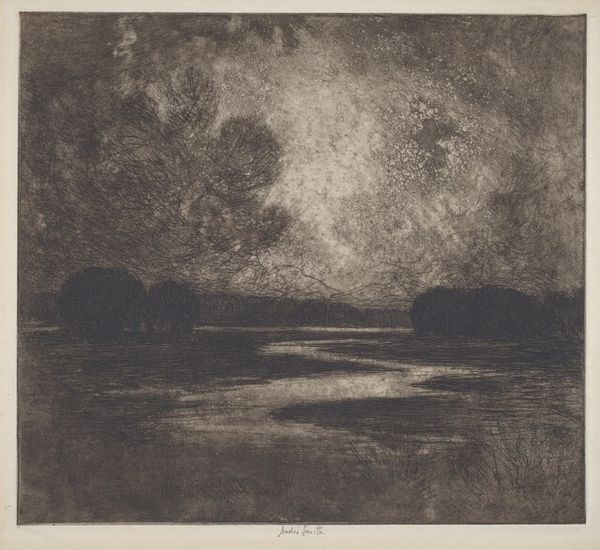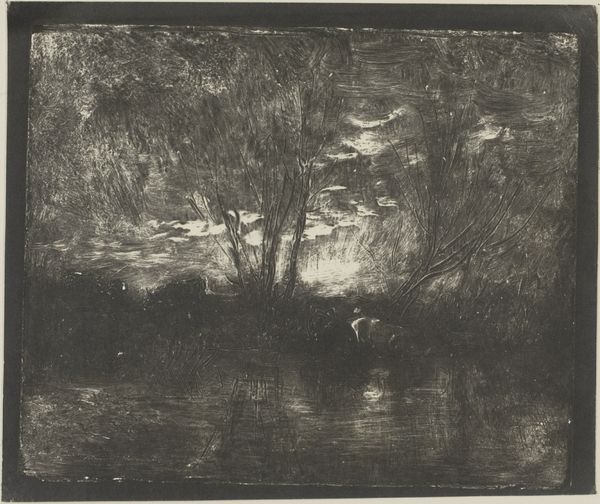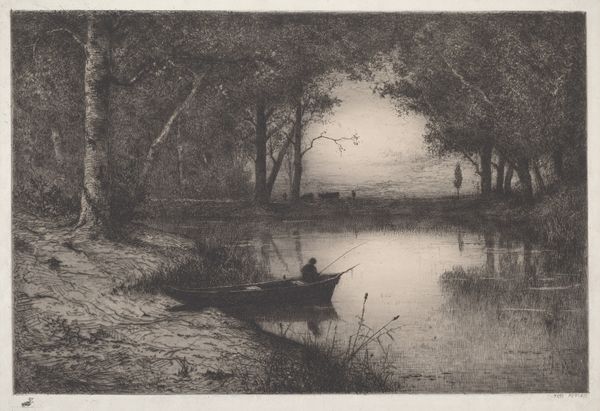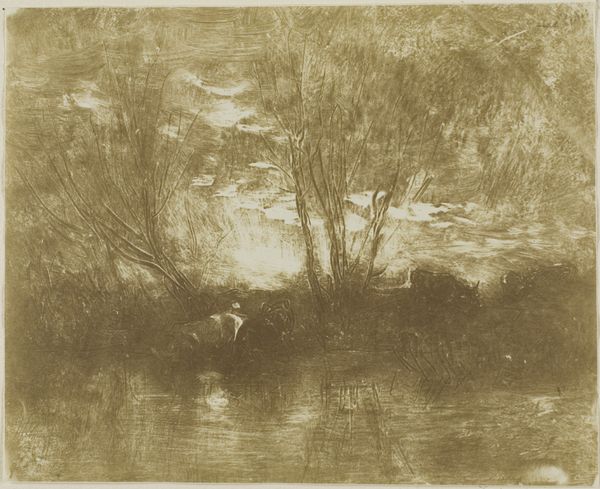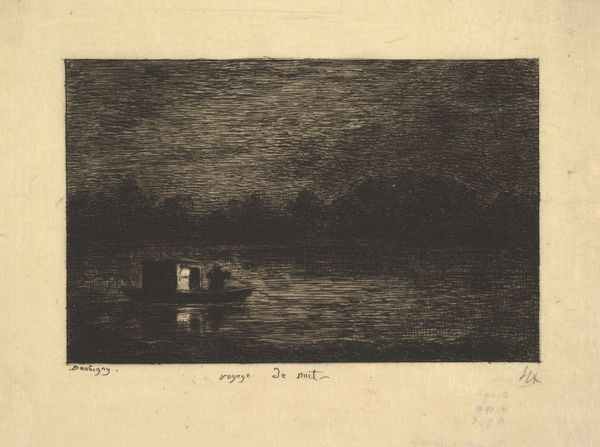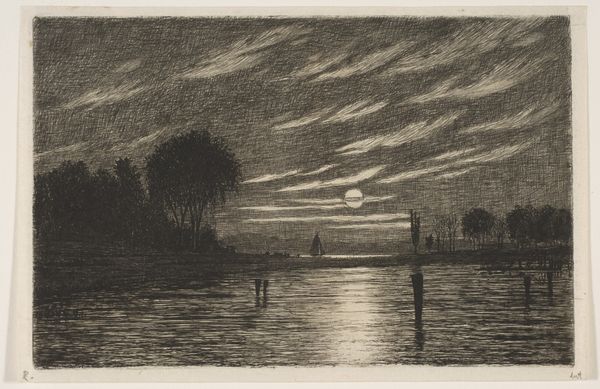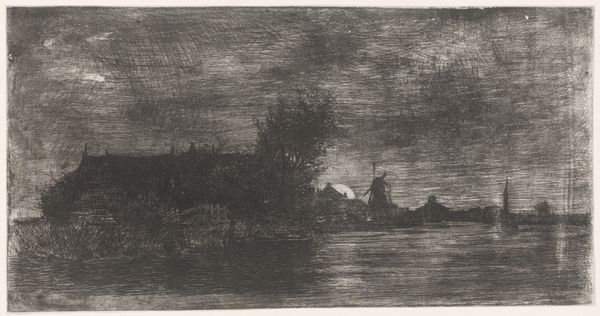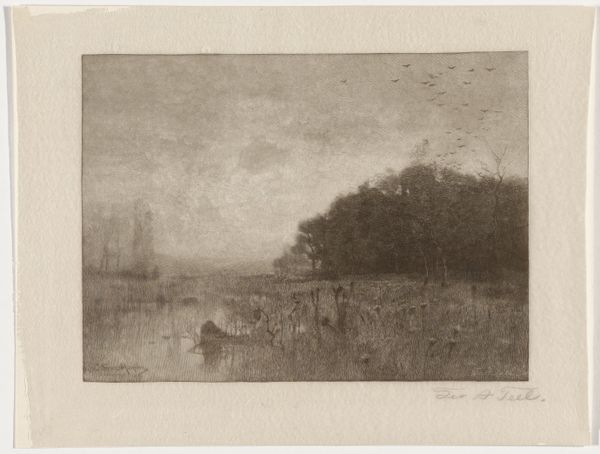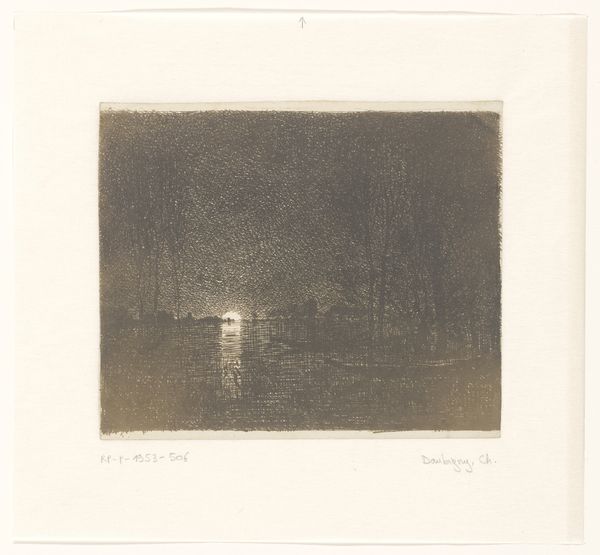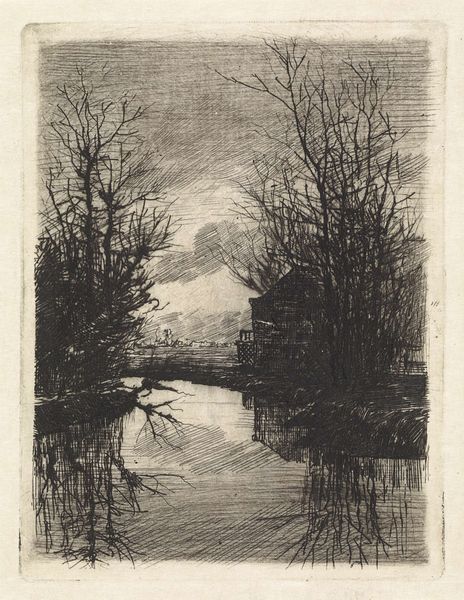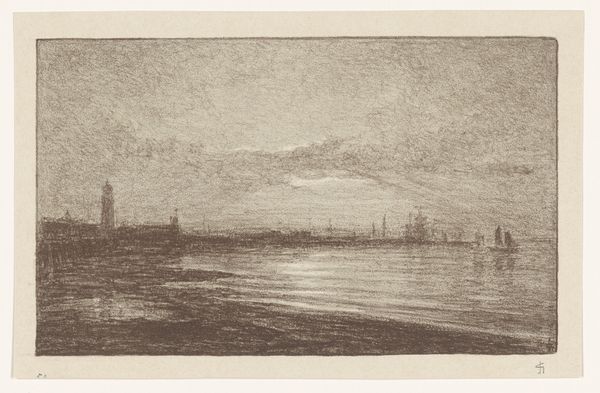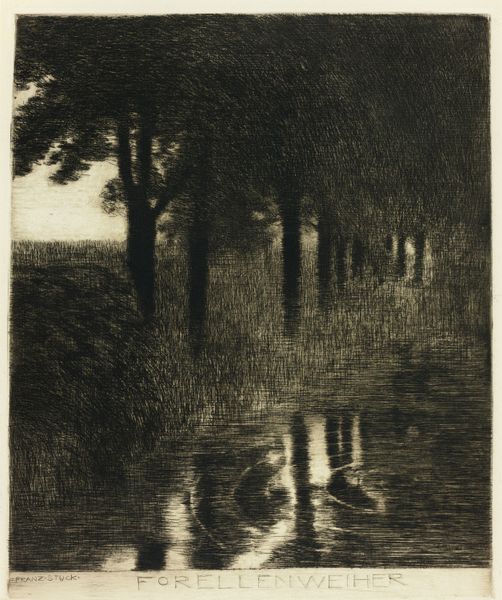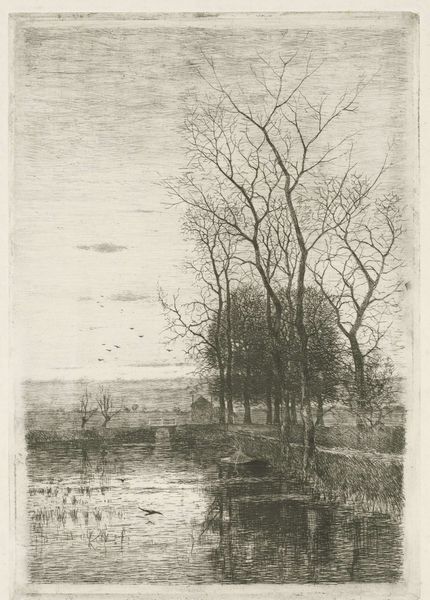
drawing, print, etching, paper
#
drawing
#
organic
# print
#
impressionism
#
organic shape
#
etching
#
landscape
#
paper
Dimensions: 148 × 187 mm (image); 148 × 189 mm (sheet)
Copyright: Public Domain
Curator: This is Charles-François Daubigny's "Night Effect," an etching from 1862, currently residing here at the Art Institute of Chicago. Editor: Whoa, it’s like peering through a dream. So murky and twinkly, all at once. Feels almost melancholic, like a memory fading around the edges. Curator: That hazy effect is partially achieved through Daubigny’s technique. He was a master of etching, using aquatint to create these atmospheric tones and textures. Look how he suggests light—not by sharply defining it, but through suggestion. Editor: Yeah, the light almost vibrates. See how it bounces off the water in this shimmery pillar of reflection? It's not literal, but man, I *feel* it. Is that the moon setting, or maybe the sun rising? The way the image feels is disorienting, and dreamlike. Curator: The ambiguity is deliberate, I think. Night, as a symbol, often represents the subconscious, the unseen. Consider, too, how the 19th century experienced increasing industrialization. Nocturnes, like this one, were often veiled criticisms of "progress" turning into the pollution of our senses. Editor: Interesting thought about industrialization and pollution. It does evoke the unsettling darkness of modern anxiety, even now. I see figures on the horizon, little black shapes. Curator: Those could be figures traveling or the mere hint of a town, a visual echo suggesting both promise and potential darkness in the distance. In its way, the light pierces through, acting as both a point of comfort, and of focus in the composition. Editor: Exactly. Even with all the shadowy bits, the way that moonlight pierces, it pulls you in and makes you ask what's lurking underneath that glossy surface. Curator: Absolutely. It encourages contemplation, about our relationship to the landscape. The piece quietly alludes to anxieties regarding technology. Editor: An etching talking about anxieties, it seems to almost embody anxiety. The image is anxious itself with the dots, smudges, scratches. Curator: Perhaps, but I think we see anxiety because Daubigny, more importantly, reflects his *experience* of a very real moment and space in nature. Editor: Okay, point taken. But still, standing here, you do get this weird sense of anticipation, right? Curator: Indeed. "Night Effect" allows for that sense of feeling the sublime. Editor: So, it's a dark picture that is much more emotionally deep when you step closer to it. I like that a lot! Curator: Agreed, I appreciate it allows room to linger within this twilight realm.
Comments
No comments
Be the first to comment and join the conversation on the ultimate creative platform.
